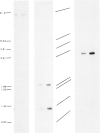Abstract
Sixty-six donors with selective IgA deficiency and one patient with selective IgA2 deficiency were investigated for immunoglobulin gene defects using restriction enzyme digestions and Southern blot analysis. All patients carried alpha 1 and alpha 2 genes in their genome, suggesting that large deletions are uncommon causes for IgA deficiency. Digestion with Bam HI, Pst I and Pvu II, did not reveal any polymorphism in the studied samples.
Full text
PDF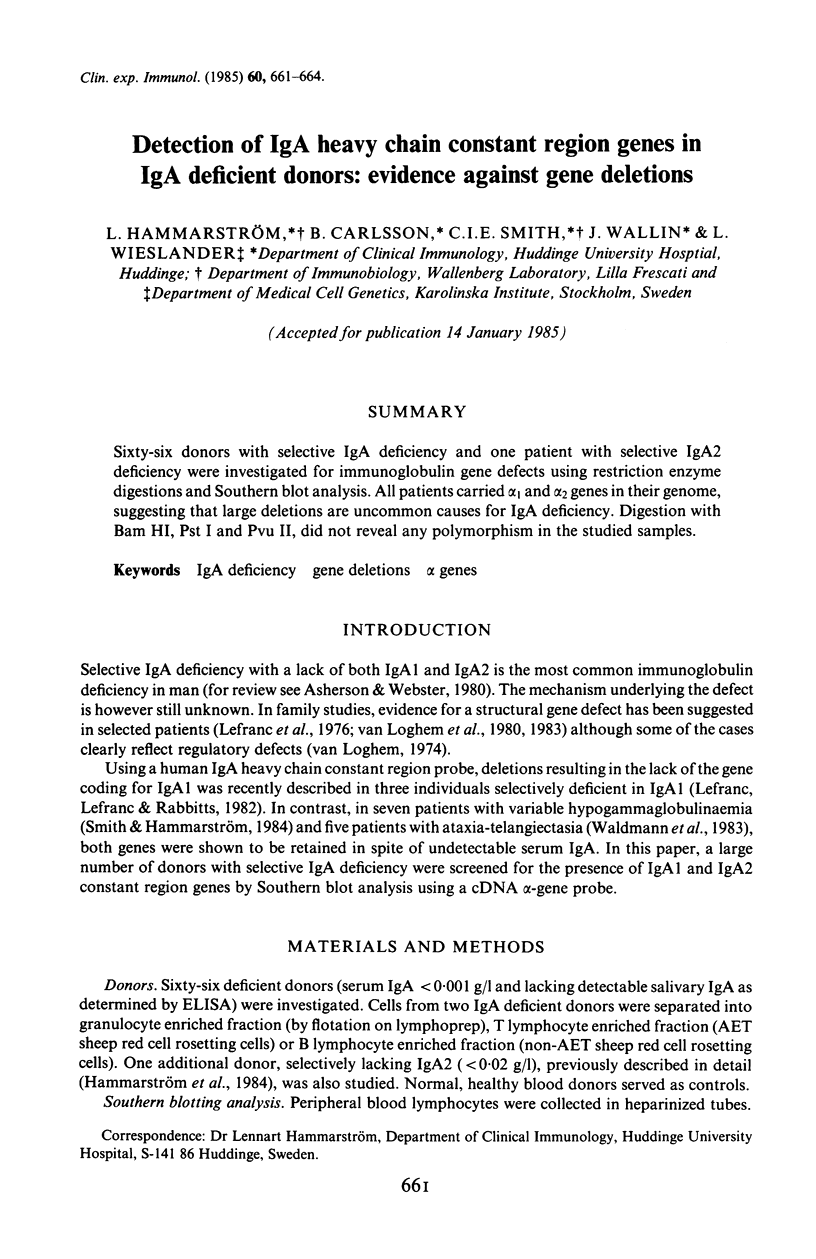
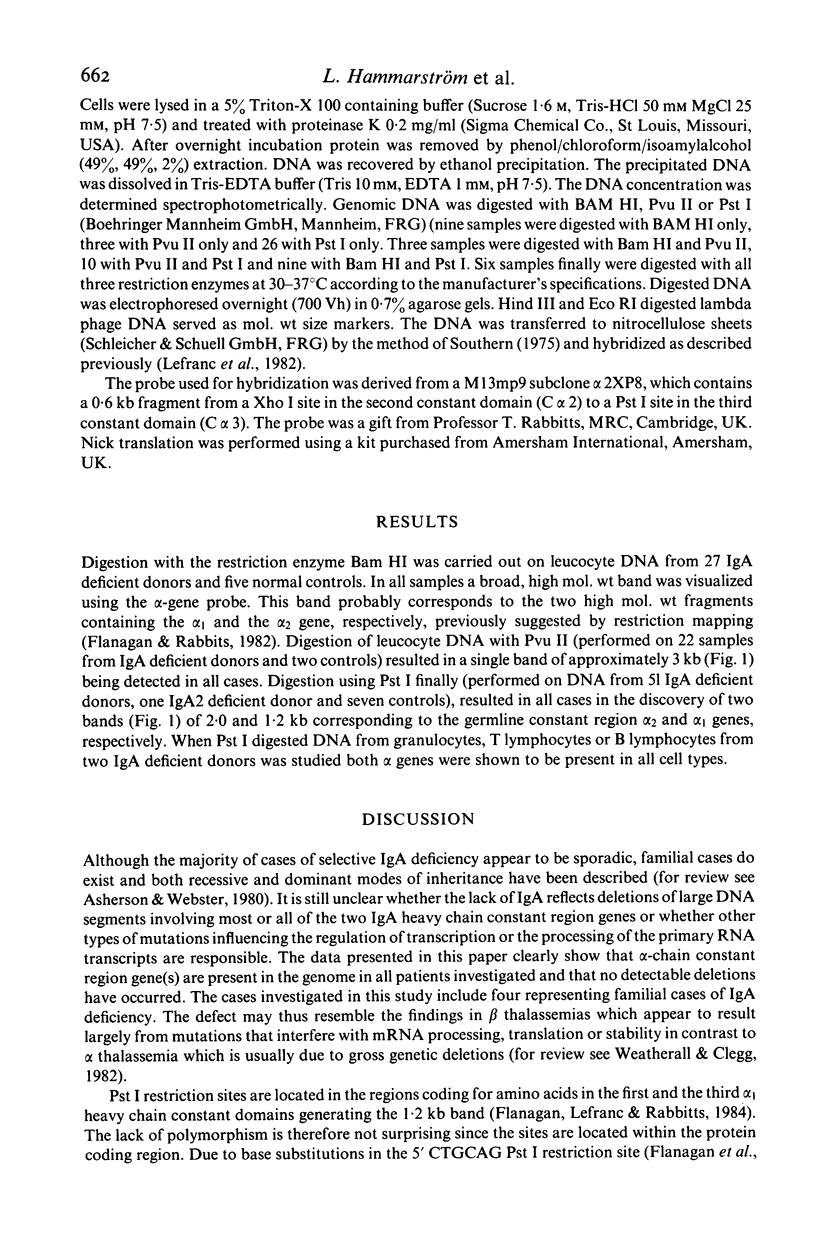
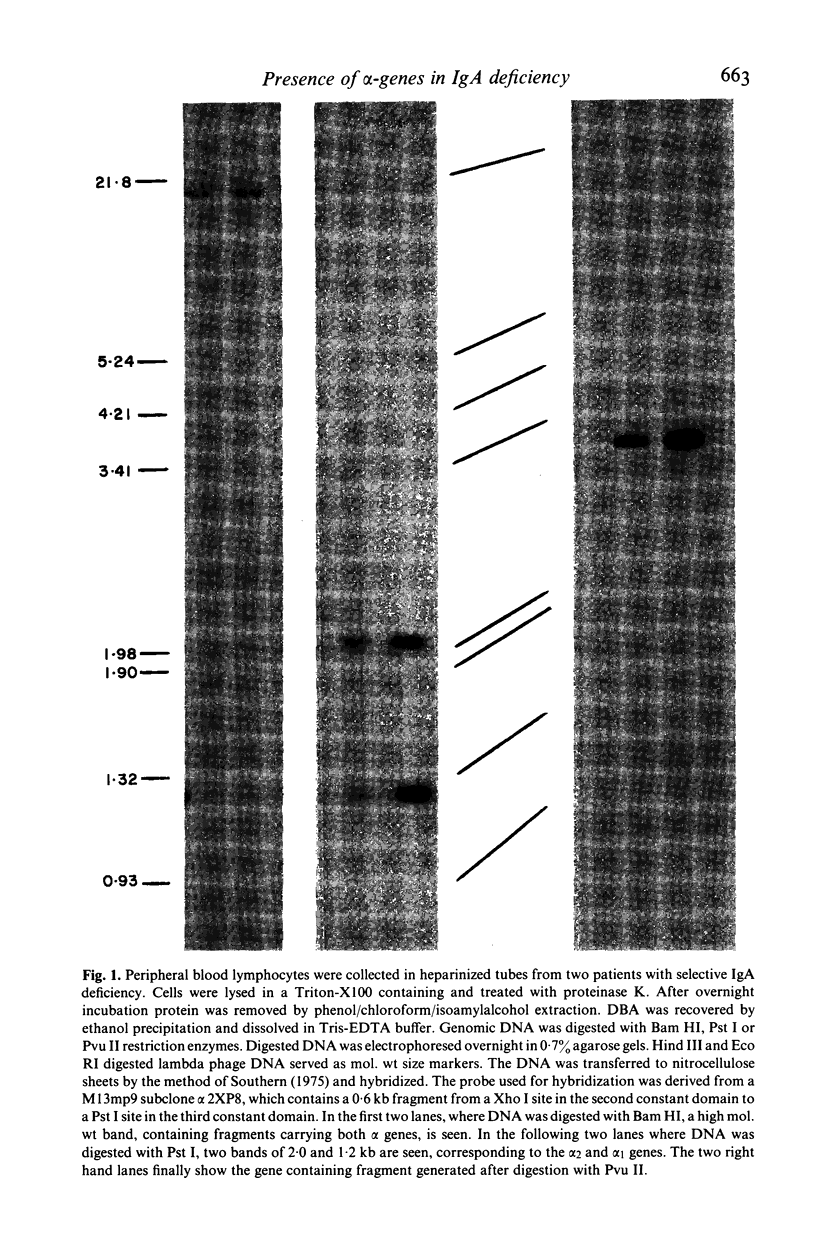
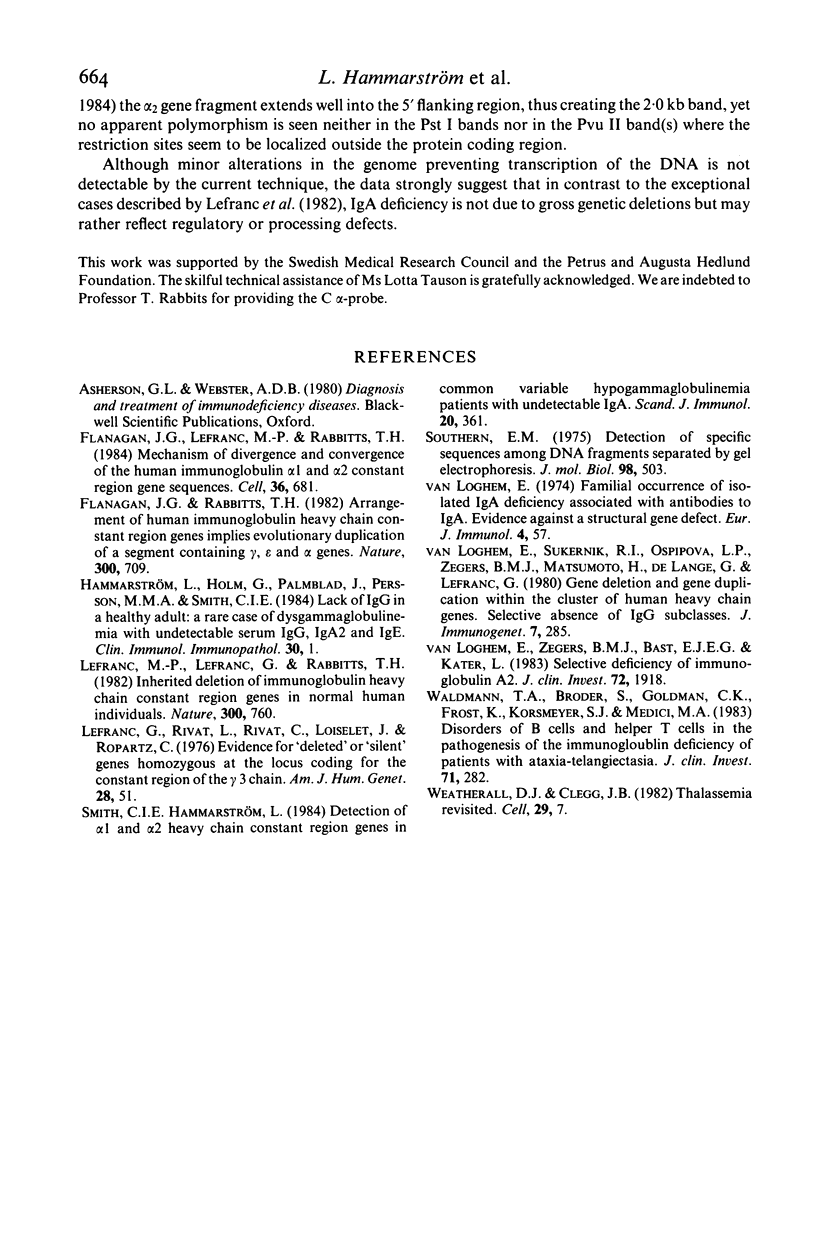
Images in this article
Selected References
These references are in PubMed. This may not be the complete list of references from this article.
- Flanagan J. G., Lefranc M. P., Rabbitts T. H. Mechanisms of divergence and convergence of the human immunoglobulin alpha 1 and alpha 2 constant region gene sequences. Cell. 1984 Mar;36(3):681–688. doi: 10.1016/0092-8674(84)90348-9. [DOI] [PubMed] [Google Scholar]
- Flanagan J. G., Rabbitts T. H. Arrangement of human immunoglobulin heavy chain constant region genes implies evolutionary duplication of a segment containing gamma, epsilon and alpha genes. Nature. 1982 Dec 23;300(5894):709–713. doi: 10.1038/300709a0. [DOI] [PubMed] [Google Scholar]
- Hammarström L., Holm G., Palmblad J., Persson M. A., Smith C. I. Lack of IgG in a healthy adult: a rare case of dysgammaglobulinemia with undetectable serum IgG, IgA2, and IgE. Clin Immunol Immunopathol. 1984 Jan;30(1):1–10. doi: 10.1016/0090-1229(84)90001-1. [DOI] [PubMed] [Google Scholar]
- Lefranc G., Rivat L., Rivat C., Loiselet J., Ropartz C. Evidence for "deleted" or "silent" genes homozygous at the locus coding for the constant region of the gamma3 chain. Am J Hum Genet. 1976 Jan;28(1):51–61. [PMC free article] [PubMed] [Google Scholar]
- Lefranc M. P., Lefranc G., Rabbitts T. H. Inherited deletion of immunoglobulin heavy chain constant region genes in normal human individuals. Nature. 1982 Dec 23;300(5894):760–762. doi: 10.1038/300760a0. [DOI] [PubMed] [Google Scholar]
- Smith C. I., Hammarström L. Detection of alpha 1 and alpha 2 heavy-chain constant-region genes in common variable hypogammaglobulinaemia patients with undetectable IgA. Scand J Immunol. 1984 Oct;20(4):361–363. doi: 10.1111/j.1365-3083.1984.tb01014.x. [DOI] [PubMed] [Google Scholar]
- Southern E. M. Detection of specific sequences among DNA fragments separated by gel electrophoresis. J Mol Biol. 1975 Nov 5;98(3):503–517. doi: 10.1016/s0022-2836(75)80083-0. [DOI] [PubMed] [Google Scholar]
- Waldmann T. A., Broder S., Goldman C. K., Frost K., Korsmeyer S. J., Medici M. A. Disorders of B cells and helper T cells in the pathogenesis of the immunoglobulin deficiency of patients with ataxia telangiectasia. J Clin Invest. 1983 Feb;71(2):282–295. doi: 10.1172/JCI110768. [DOI] [PMC free article] [PubMed] [Google Scholar]
- Weatherall D. J., Clegg J. B. Thalassemia revisited. Cell. 1982 May;29(1):7–9. doi: 10.1016/0092-8674(82)90084-8. [DOI] [PubMed] [Google Scholar]
- van Loghem E. Familial occurrence of isolated IgA deficiency associated with antibodies to IgA. Evidence against a structural gene defect. Eur J Immunol. 1974 Jan;4(1):57–60. doi: 10.1002/eji.1830040115. [DOI] [PubMed] [Google Scholar]
- van Loghem E., Sukernik R. I., Osipova L. P., Zegers B. J., Matsumoto H., de Lange G., Lefranc G. Gene deletion and gene duplication within the cluster of human heavy-chain genes. Selective absence of IgG sub-classes. J Immunogenet. 1980 Aug;7(4):285–299. doi: 10.1111/j.1744-313x.1980.tb00722.x. [DOI] [PubMed] [Google Scholar]
- van Loghem E., Zegers B. J., Bast E. J., Kater L. Selective deficiency of immunoglobulin A2. J Clin Invest. 1983 Dec;72(6):1918–1923. doi: 10.1172/JCI111155. [DOI] [PMC free article] [PubMed] [Google Scholar]



